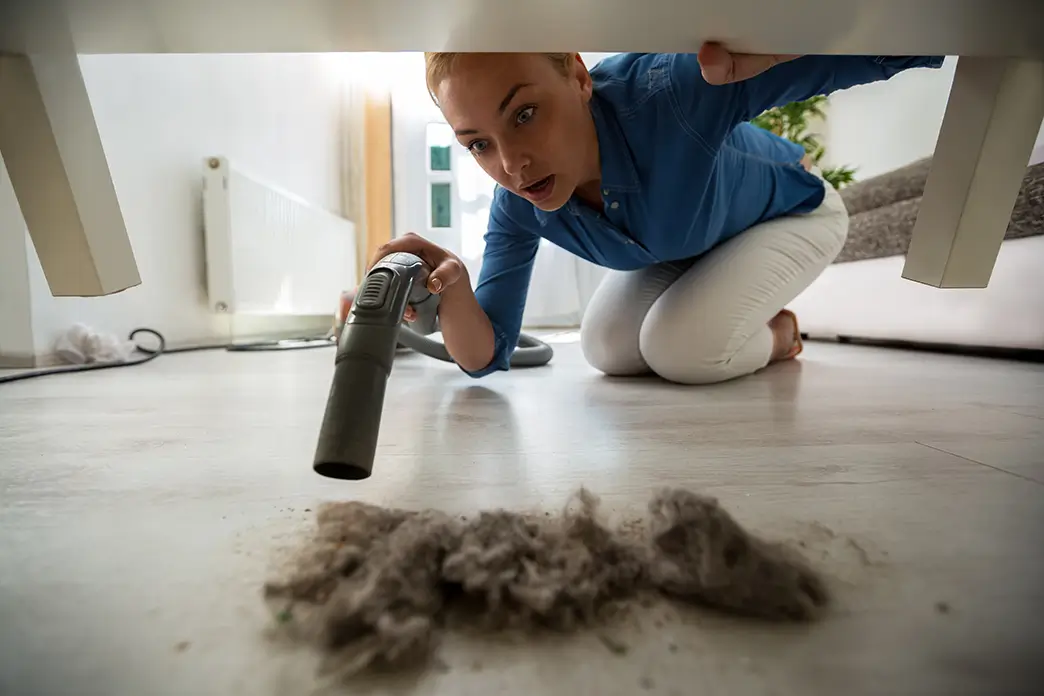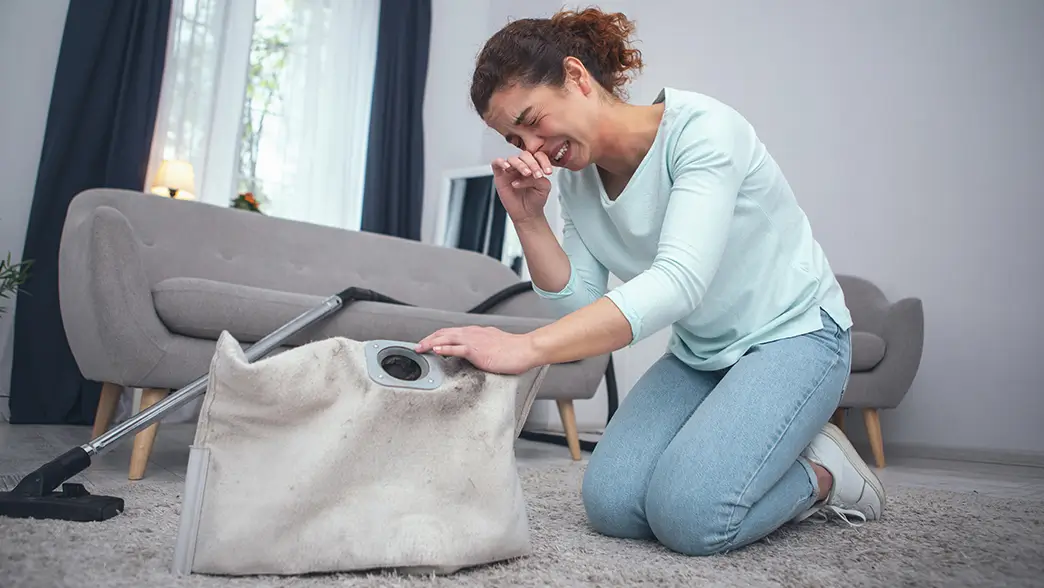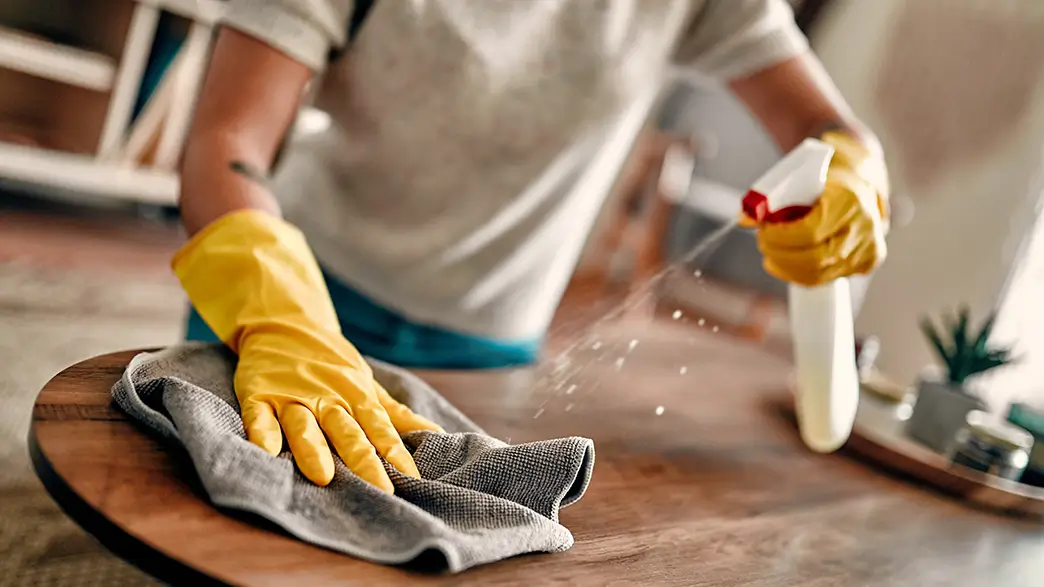
House Dust Allergy - The Hidden Allergy of Everyday Life
The house dust allergy is one of the most common allergies, and it's almost impossible to escape it. It has a sneaky nature because many affected people are unaware that they have a dust allergy. The symptoms are hardly distinguishable from a common cold and are often mistaken for a cold in autumn and winter. In spring and summer, house dust allergy is often confused with hay fever. Mild to moderate symptoms often go unnoticed for years, leading to seemingly chronic symptoms. House dust allergy becomes dangerous only when it develops into allergic asthma.
The "dust allergy" is not really caused by dust itself but by the excrement of microscopic house dust mites that live in dust and dirt. It's also known as "house dust mite allergy." A house dust allergy can be medically diagnosed and effectively treated. This blog post discusses the allergy, its symptoms, possible treatments, and measures you can take yourself. Simply click on the table of contents to jump to the desired section.

What is house dust?
House dust consists of tiny particles and fibers that settle as a fine, grayish layer on all surfaces. When enough dust particles clump together, they form what are known as dust bunnies (or "lurks" if you live in Austria), which are fuzzy, disintegrated formations driven by any draft through the apartment. What exactly house dust is made of depends on your living situation and the conditions at home. Below is a list of typical particles that settle as house dust in any room where people live or work.
- The daily use of furniture and fabrics, as well as wearing clothes, leads to minimal abrasion of textile fibers and lint, which spread as microscopic particles in the surroundings.
- The skin of people and pets is constantly renewing itself—dead skin falls off in the form of tiny skin flakes, dries out, and disintegrates into tiny particles. Various creatures, such as silverfish or mites, feed on these skin flakes and/or fallen hair.
- Hair also contributes to dust formation, as people and pets like dogs or cats lose numerous hairs daily. Longer hairs often clump together and act as actual "dust catchers," to which more dust particles adhere. Hair decomposes very slowly. Bird feathers also slowly disintegrate into dust.
- House dust mites and their excrement are typical components of house dust. Dead, decaying mites, as well as the excrement of living animals, are the actual triggers of house dust mite allergy.
- Shed leaves, seeds, and pollen from indoor plants decompose over time into plant fibers and particles that mix with the rest of the dust.
- Dirt particles cling to shoes and clothing, which are brought into the apartment from outside. Thus, particles of soil, leaves, construction debris, and other street wear also end up in house dust.
- Exhaust gases and pollutants contain particles like soot or fine dust, which enter the apartment through open windows and settle as dust.
Dust is unavoidable in everyday life. Industrial facilities, which need to be protected from dust due to its electrostatic properties, must be sealed off with extremely complex protective measures. For most people, however, house dust is primarily an aesthetic problem. It looks ugly and messy when floors and furniture are covered with a layer of dust. Normal daily hygiene reliably removes visible dust. However, even small amounts of dust mixed with mite excrement are enough to trigger a house dust allergy. Whether you develop a dust allergy has nothing to do with a lack of hygiene—it all depends on how your immune system reacts to a particular allergen.

Symptoms of House Dust Allergy
The symptoms of a house dust allergy resemble those of a common illness. Typical symptoms include swollen mucous membranes, a stuffy or runny nose, and frequent, intense sneezing. Allergic sneezing fits can last for a while and be very exhausting — noticeably frequent sneezing in your own home is a good indicator of a dust allergy. Symptoms can also appear in the eyes, where they manifest as itching, redness, and excessive tearing. Less commonly, skin rashes or hives with welts may occur. Symptoms are often strongest when allergy sufferers lie in bed since house dust mites like to inhabit bedding and mattresses.
In more severe cases, house dust mite allergy can develop into bronchitis and, in the long term, cause the dreaded allergic asthma. All these symptoms also occur with colds, flu, or allergies to pollen and animal allergens. Especially with mild symptoms, sufferers often get used to the permanent "cold-like state" and try to live with it. However, the frequent occurrence of symptoms at any time of the year should be a warning sign—especially if the symptoms ease outdoors but return indoors.
Seek medical advice and examination if you experience the described symptoms—you might be suffering from a house dust allergy.

House dust mites cause dust allergy with their excrement
House dust mites are tiny arachnids that have adapted to life in dust. They are practically only found in human dwellings because they feed on our dead skin flakes and hair. They find their food in our dust, but they don't live in it. House dust mites prefer high humidity and like to nest in beds. The human body sweats during sleep, creating the warm, moist climate that mites love. Thanks to our falling skin flakes and hair, they can even have breakfast in bed. By the way, some mite species are likely to feed on mold spores and fungi - these creatures are at least somewhat useful.
The excrement of the mites, as well as the remains of dead mites, mix as fine particles with the rest of the dust in the environment. These allergens are inhaled or come into contact with the mucous membranes in the mouth, nose and eyes. The allergy is triggered by certain proteins, primarily found in mite excrement. These proteins are actually harmless, but in the case of an allergy, the immune system starts defending itself and sends its antibodies to attack the mite proteins. The antibodies attack the allergens with histamine - a substance that causes inflammation. Histamine triggers allergic reactions like itching, sneezing, or a runny nose.
House dust mites themselves are so tiny that they are hardly visible to the naked eye. They reproduce quickly under favorable conditions and can even survive long periods of harsh conditions. If the humidity drops too much, mites can enter a so-called "dormant stage". In this stage, they reduce themselves to an almost lifeless state and can survive for a long time, only to become active again when humidity rises. This is why the mite population in homes is lowest in winter when dry heating air affects house dust mites. The arachnids multiply most in spring through autumn.

Diagnosing and Desensitizing House Dust Allergy
An allergy test can easily determine if you have a house dust allergy. Such a test can be carried out in an allergology practice - many general practitioners or dermatologists have also specialized in allergies. A prick test is the usual procedure. This is a skin test in which a drop of liquid containing allergens is lightly scratched into the top layer of skin. The allergen can penetrate the skin tissue and cause a visible reaction if an allergy exists.
The symptoms of a house dust allergy can be treated with medications that suppress histamine production. Special nasal sprays reduce nasal swelling, although their effectiveness diminishes with long-term use. In most cases, it is more sensible to tackle the allergy with desensitization to weaken or even eliminate it permanently.
Desensitization can be done via subcutaneous injection or oral preparations. Patients receive gradually increasing doses of the allergen over a long period. The entire process can take three to five years but promises a good chance of permanently weakening the allergy.

Measures to Better Live with a House Dust Allergy
If you suffer from a house dust allergy, you can take various measures to reduce the allergen load in your home. While house dust can't be completely avoided, it can be reduced. Attacking mites with chemicals is pointless, and any pest controller will dismiss this approach. The creatures will always spread again. Even natural predators like predatory mites or silverfish don't reduce the house dust mite population sufficiently. Hygiene is the best answer to a house dust mite allergy.
- House dust mites mainly live in bedding, sheets, and mattresses because they find the most skin flakes and an ideal, humid climate there. Wash your bedding and sheets once a week at a minimum of 60 degrees to reliably remove mites and their excrement. Air out the bed after getting up before making it to allow the moisture from night sweat to escape.
- Carpets also harbor numerous mites, especially if you have pets whose skin flakes and hair end up in the carpets. Vacuum all carpets thoroughly several times a week. Better yet, replace all carpets with parquet, laminate, or tiles. Smooth floors are easier to clean and offer house dust mites no hiding places.
- Anything fluffy with a textile or synthetic fiber surface can serve as a hiding place for dust mites. Blankets, sofa cushions, curtains, and upholstery - reduce these where possible or store blankets and cushions in closable containers. Furniture with leather or synthetic leather coverings is easier to wipe clean.
- Stuffed animals are, of course, ideal homes for house dust mites. However, children should not have to give up their fluffy companions. Many stuffed animals can be washed at 60 degrees. If this is not possible, you can freeze the stuffed animal in the freezer for 12-24 hours and then wash it at a suitable temperature.
- Dust floats as fine particles in the air, as it is stirred up from the floor with every movement. Frequent ventilation of all living spaces reduces the amount of dust in the air. Air purifiers with strong HEPA filters can reduce the particle density in the room air to a minimum. As a dust allergy sufferer, you should at least equip your vacuum cleaners with HEPA filters to retain even the finest particles.
- If you are looking for a natural remedy against mites, you could try pure tea tree oil. This essential oil is extracted from the leaves of the Australian tea tree and contains no preservatives. It is said that its scent can repel insects and mites for a while. Add a splash of tea tree oil to your cleaning water and spray it on furniture and curtains or wipe the floors with it. However, this method is not scientifically proven.
When cleaning, you inevitably come into contact with house dust - therefore, it can be useful to wear protective clothing. Disposable gloves prevent direct skin contanct with dust and can be easily disposed of after use. A medical face mask prevents you from inhaling dust particles. FFP2 masks are particularly efficient, as they can filter even the finest particles from the air you breathe. Wipe with damp cloths to stir up less dust. For surfaces of keyboards, phones, and other frequently touched objects, using damp disinfectant wipes makes sense, as it also removes germs that may be living in the dust on these surfaces.



